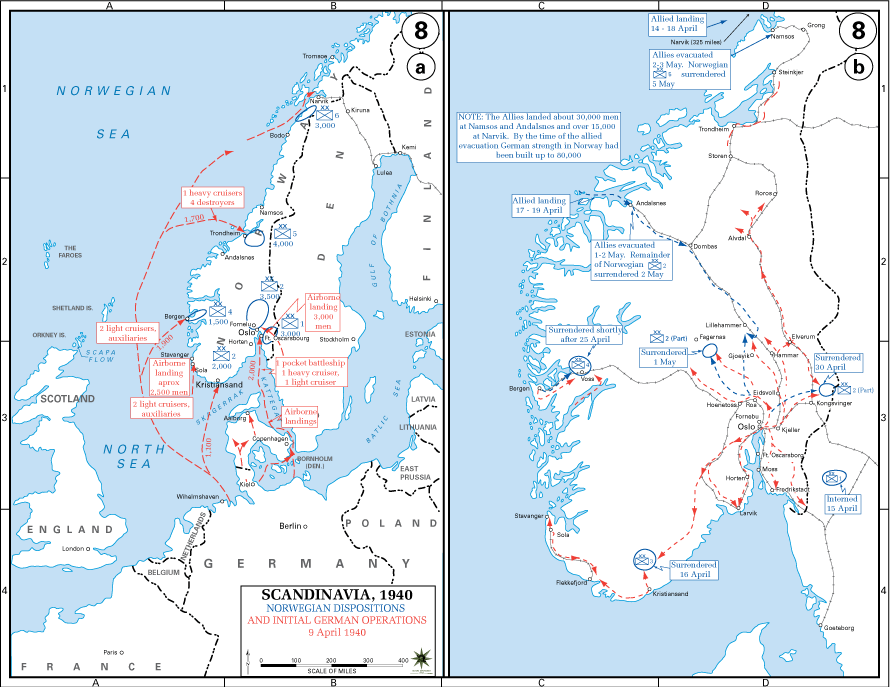On 28 September 1949, the UK requested that the International Court of Justice determine how far Norway’s territorial claim extended to sea, and to award the UK damages in compensation for Norwegian interference with UK fishing vessels in the disputed waters, claiming that Norway’s claim to such an extent of waters was against international law.
On 18 December 1951, the ICJ decided that Norway’s claims to the waters were consistent with international laws concerning the ownership of local sea-space.
The Court found that neither the method employed for the delimitation by the Decree, nor the lines themselves fixed by the said Decree, are contrary to international law; the first finding being adopted by ten votes to two, and the second by eight votes to four. Three Judges — MM. Alvarez, Hackworth and Hsu Mo appended to the Judgment a declaration or an individual opinion stating the particular reasons for which they reached their conclusions; two other Judges—Sir Arnold McNair and Mr. J. E. Read—appended to the Judgment statements of their dissenting Opinions.
The situation which gave rise to the dispute and the facts which preceded the filing of the British Application are recalled in the Judgment. The coastal zone concerned in the dispute is of a distinctive configuration. Its length as the crow flies exceeds 1,500 kilometers. Mountainous along its whole length, very broken by fjords and bays, dotted with countless islands, islets and reefs (certain of which form a continuous archipelago known as theskjaergaard, “rock rampart”), the coast does not constitute, (as it does in practically all other countries in the world) a clear dividing line between land and sea. The land configuration stretches out into the sea and what really constitutes the Norwegian coastlineis the outer line of the land formations viewed as a whole. Along the coastal zone are situated shallow banks which are very rich in fish. These have been exploited from time immemorial by the inhabitants of the mainland and of the islands: they derive their livelihood essentially from such fishing. In past centuries British fisherman had made incursions in the waters near the Norwegian coast. As a result of complaints from the King of Norway, they abstained from doing so at the beginning of the 17th century and for 300 years. But in 1906 British vessels appeared again. These were trawlers equipped with improved and powerful gear. The local population became perturbed, and measures were taken by Norway with a view to specifying the limits within which fishing was prohibited to foreigners. Incidents occurred, became more and more frequent, and on July 12, 1935 the Norwegian Government delimited the Norwegian fisheries zone by Decree. Negotiations had been entered into by the two Governments; they were pursued after the Decree was enacted, but without success. A considerable number of British trawlers were arrested and condemned in 1948 and 1949. It was then that the United Kingdom Government instituted proceedings before the Court.
OVERVIEW OF THE CASE
The Judgment delivered by the Court in this case ended a long controversy between the United Kingdom and Norway which had aroused considerable interest in other maritime States. In 1935 Norway enacted a decree by which it reserved certain fishing grounds situated off its northern coast for the exclusive use of its own fishermen. The question at issue was whether this decree, which laid down a method for drawing the baselines from which the width of the Norwegian territorial waters had to be calculated, was valid international law. This question was rendered particularly delicate by the intricacies of the Norwegian coastal zone, with its many fjords, bays, islands, islets and reefs. The United Kingdom contended,inter alia, that some of the baselines fixed by the decree did not accord with the general direction of the coast and were not drawn in a reasonable manner. In its Judgment of 18 December 1951, the Court found that, contrary to the submissions of the United Kingdom, neither the method nor the actual baselines stipulated by the 1935 Decree were contrary to international law.

